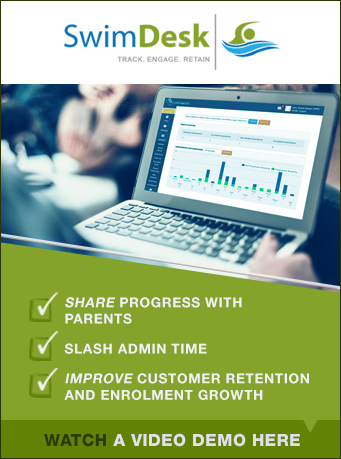It is clear that competition in the swim school industry is at an all-time high. The exploding competition means that swim school operators need to focus on providing a great service in order to retain their customers and avoid being overrun by competition.
The best thing a swim school can do is to provide a high quality of teaching. Parents are ultimately investing for a result, want to see their child progress and learn to swim. If teaching is poor or average and student progression is slow, then this can be a recipe for high customer attrition.
However, most well run swim schools will have a good quality of teaching and student progression, so how do swim schools standout in this increasingly competitive market if they are already providing a high quality of teaching?
This is an important question! Price tends to be the default strategy when it comes to trying to gain a competitive advantage, however, this can be a dangerous game. By playing the low pricing strategy, profit margins are lowered and the market begins a cycle of commoditization as providers start battling for the lowest possible price. This is a game that only ever ends in a bad result.
Perhaps, a more effective strategy seen by savvy operators is increasing the value or level of service they provide to their customers.
Some operators are using innovative ways to enhance their customer experience and provide their swim schools with a point of difference over the competition.
This short article will explore some of these innovations from industry leaders who are finding new ways to standout from the crowd.
1. Parent Feedback
The first obvious one is based on improving feedback of parents. Parents want to know how their child is progressing, so providing them with a regular update through a tool such as SwimDesk’s parent portal allows swim schools to provide parents with a greater level of communication. Over the past 24 months, such a tool is becoming common place in the industry as operators look for ways to satisfy their customers more effectively.
2. Photos
A more recent innovation is the use of student photos to create a memory book for parents. This can be done easily through some applications and swim school software where the teacher will take a photo of a child completing a swimming activity on a waterproof iPhone or tablet device and this will be posted on a secure online portal for the parent to view. This concept can be seen within the child care industry where day care operators will post photos for parents of their children so they can see what they have been learning. In addition to this, over the time, a history of photos from the child’s swimming lesson journey will be generated which creates a photo captured set of memories for the child’s swimming lessons.
3. Using Video Content
An extension of the above idea is using video content to help inform and educate parents. One challenge a lot of swim schools face is trying to communicate with parents what they are looking for in terms of a skill before a child is deemed to be competent at that skill. It can be hard to verbalise and communicate these expectations to parents and some savvy swim schools are using video content to highlight what they are looking in a child’s skill completion before they are considered to have mastered the skill. Again, this content can be made available online via a parent portal where parents can “self-serve” and view this content if they desire.
4. Digital Reward Charts
One of the biggest challenges with running a swim school is keeping children motivated. The current standard is providing children with certificates whenever they progress from one level to another. However, children typically progress every 1 to 2 terms. Therefore, it may be 6 months between providing the next certificates to a child. This is too long between rewards to keep children motivated. A more effective approach is to provide an ongoing reward system where children get rewarded when they do something well such as completing a skill or behaving well. This can be in the form of a digital certificate or sticker chart that teachers can use to quickly assign students these rewards when they have done a good job.
These are just some of the ideas that can be seen used by innovative swim school operators throughout the country. By focusing on adding value and improving the customer experience, these swim schools standout from the crowd and enjoy a significant advantage over their competition.
The ideas outlined above can all be easily implemented using SwimDesk software which can help your swim school enhance its customer communication and experience. To discover more, go to www.swimdesksoftware.com



